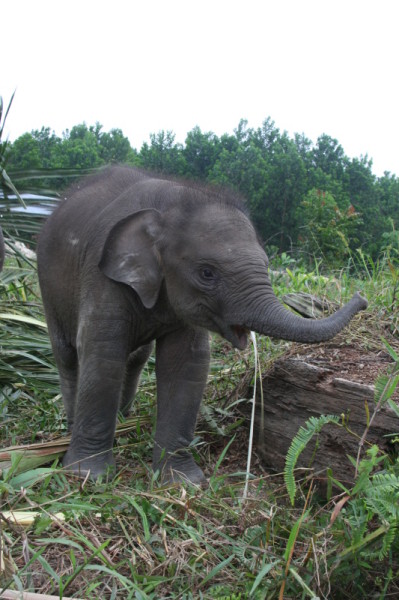WWF calls on Indonesia to take action for the 129 Sumatran elephant deaths since 2004
WWF-Indonesia released a new report stating that 129 Sumatran elephants died in the Riau province of Sumatra since 2004. Fifteen elephants were found dead in 2012 alone. These numbers are alarming.
On May 31, 2013, WWF-Indonesia’s GPS collar installation team found two elephants dead in the Tesso Nilo National Park, one of the last havens for endangered Sumatran elephants. One adult male elephant was found dead in the Riau Andalan Pulp and Paper (RAPP) concession area, which overlaps with the Tesso Nilo area. The other was an adult female elephant found inside the boundary of the park. The team estimated that they had been dead for three or four days before being found and suspected the death was due to poisoning.
Although agencies including the Natural Resource Conservation Agency of Riau Province and Pelalawan Region Farming Office have deployed autopsy teams to followup on the WWF report of these elephant deaths, we have yet to see real action towards these incidents beyond securing the tusks of the male elephant found in the concession area.
WWF-Indonesia is urging the Ministry of Forestry to enforce the law on elephant deaths in Riau as publicly committed by its minister, Zulkifli Hasan.
“The massive number of elephant deaths indicates that the government has not handle these cases seriously. Real actions are needed in the field in order to deter and prevent these deaths in the future,” said Anwar Purwoto, Director of Forest, Freshwater and Terrestrial Species at WWF-Indonesia.
WWF-Indonesia’s recent study shows that in the last 25 years, Sumatran elephants have lost 70% of their habitats and suffered a severe declining population. The Sumatran elephant population in 2007 is estimated to be between 2400 – 2800 individuals.
Learn more about WWF’s approach to promoting conservation of Sumatran elephants in the Riau Province here.
How you can help
- Don’t buy ivory products. Illegal trade in elephant ivory is a continuing problem, posing one of the greatest threats to elephants today.
- Use and support sustainable wood, paper and palm oil. By purchasing certified sustainable palm oil and FSC-certified forest products, retailers, traders, and manufacturers help protect Asian elephant habitat by limiting illegal logging and forest conversion to oil palm plantations. Consumers can also help by demanding certified products.
- Donate to WWF and help support conservation programs such as the Asian Rhino and Elephant Action Strategy


